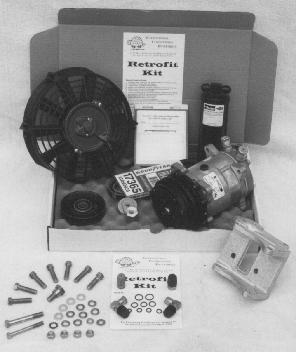Retrofitting your Toyota air conditioning system
Cool as ICE

BY ROBERT POGGI & MICHAEL HOFFMAN
PHOTOGRAPHY. I.C.E. ENVIRONMENT
Automotive air conditioning has been around since the 1940s, and little has really changed
since the first systems were developed. However, the re-evaluation of the Montreal
Protocol (a multinational. worldwide agreement concerning the depletion of the upper ozone
layer) is having a major impact on the auto air conditioning industry, which has used CFC
R-12 refrigerant (AKA Fresno, an ozone-depleting substance) almost exclusively until the
‘94 model year.
In 1990 alone, 122 million pounds of R-12 were released into the environment. The
depletion of the ozone layer increases the amount of radiation entering the earth’s
atmosphere, and has been significant scientific evidence of increased radiation levels in
the environment. Higher levels of radiation result in a trend of global warming that
accelerates the melting of the polar ice caps. Moreover, a higher level of ultraviolet
rays is knowing the cause skin cancer and other radiation poisoning.
In case you haven’t heard, Freon is no longer being produced. If you own a pre-1993
Toyota at some point in the future your vehicle will need its air conditioning system
serviced. Fortunately, the automobile industry, in conjunction with the Society of
Automotive Engineers, has established retrofitting procedures for upgrading your existing
CFG R-12 auto a/c to HFC R-134a, a non-ozone-depleting refrigerant. The R-134a is
currently being installed in most new production vehicles. This compound is currently the
only refrigerant acceptable by the U.S. Environmental Protection Agency.
A vehicle’s a/c system works by the refrigerant constantly changing from a gas to a
liquid state, which cools the vehicle’s interior. Most typical air conditioning
systems consist of five major components: the compressor, condenser, orifice expansion
valve, evaporator and accumulator-dehydrator. The compressor brings in the refrigerant gas
from the evaporator and compresses under high pressure to circulate throughout the